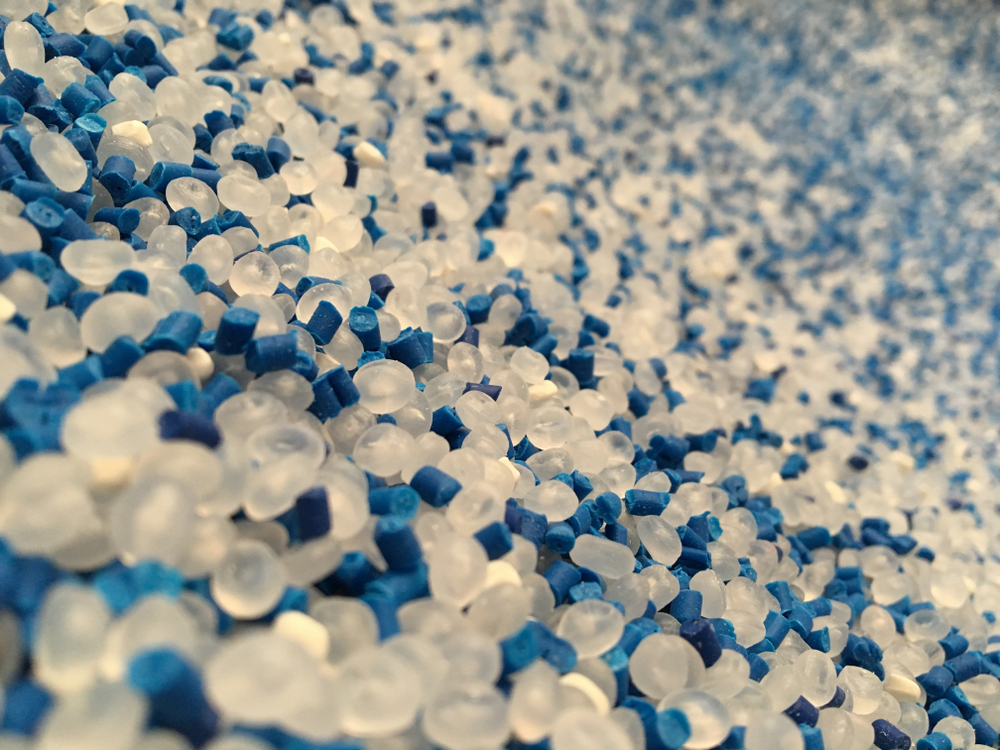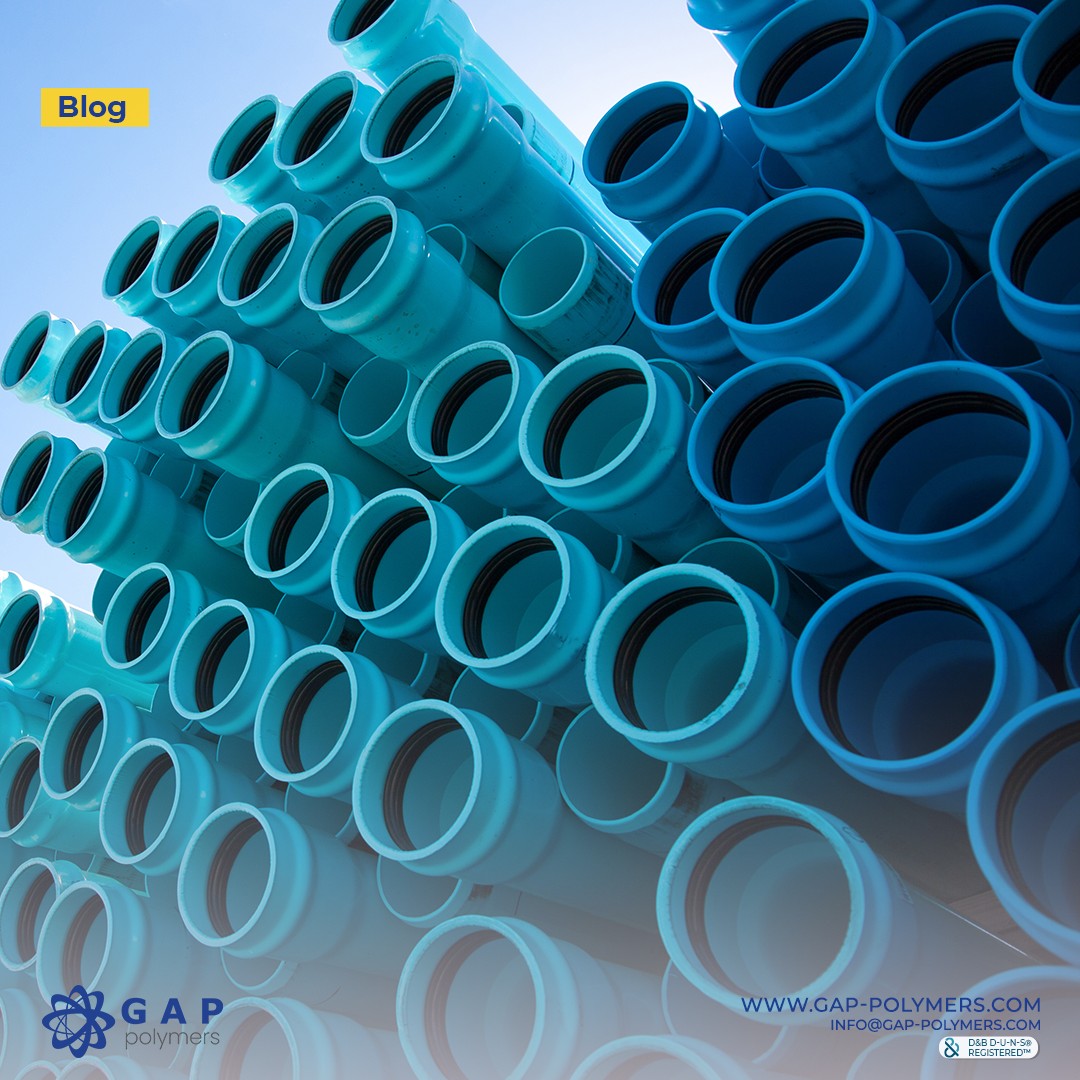
What is PVC (polyvinyl chloride) - Uses and Market...

Polyvinyl Chloride (PVC) plastic is the third globally most-produced/consumed plastic with more than 40 million ton/year and expected to reach 60 million ton/year by 2026. So, when we add different additives , PVC can be supplied in countless types of raw materials that are ready to be used in many applications.
Here we will learn about some properties and applications of polyvinyl chloride. We will also learn about how it could be harmful to the human health. We’ll get to know also about the producing and exporting markets, the global traders, and how it is transported and shipped.
What is the thermoplastic resins "PVC"?
There are two categories of plastics, which are also known as synthetic resins. They are thermosetting resins and thermoplastic resins.
The thermosetting resins include phenolic resin and melamine resin. They are thermally hardened, rigid, not-flexible, and can't be softened again, even if they are exposed to a heat source. Thermoplastic resins include PVC, polyethylene (PE), polystyrene (PS), and polypropylene (PP), are flexible, and can be re-softened by heating. Here comes an important question: What PVC means? - It is an abbreviation for "Polyvinyl Chloride". With more than 45 million tons produced each year, PVC comes in the third place as the most widely produced synthetic plastic polymer.
In contrast to other thermoplastics, PVC resin is produced in powder form. The rest of thermoplastics are supplied in a form of compounds as granular already mixed with additives (like the antioxidants, etc). That's why long-term storage is possible since the material is resistant to oxidation and degradation. During the processing stage, various additives and pigments are added to PVC. The aim is to manufacture multiple PVC products of different properties.
What type of material is PVC?
PVC is known as ‘Vinyl’ or "Polyvinyl Chloride". Its chemical formula is (C2H3Cl)n and it's insoluble in water and alcohol. In Europe, ‘Vinyl’ usually refers to certain specific flexible applications. For instance, flooring, decorative sheets, and artificial leather.
57% of chlorine (derived from industrial grade salt). 43% of carbon (derived predominantly from oil/gas via ethylene) are the percentages of components needed for the PVC to be formed. It is less dependent than other polymers on crude oil or natural gas. They are nonrenewable, and hence can be regarded as a natural resource saving plastic. In contrast to plastics such as PE, PP, PET, and PS, which are totally dependent on oil or gas. This chlorine gives PVC excellent fire resistance.
What is PVC used for?
It’s the third worldwide most-consumed polymer, because PVC - beside many other reasons - is a cheap polymer. PVC raw materials offer a wide variety of uses and applications.
By adding chemical additives to the polyvinyl chloride you can get countless uses, products, and applications. This includes among many others: pipes, medical devices, wire and cable insulation, window frames, drainage pipe, water service pipe, medical devices, blood storage bags, and many others.
Actually, PVC comes in rigid and flexible forms, and accordingly PVC applications and products are differentiated. It's widely used in building materials and construction specially the rigid form of the polyvinyl chloride. For example in pipe and profile applications like in doors.
The flexible form of the PVC is used in applications such as cable insulation, leather, and flooring.
In the United States and England PVC is also used in various applications related to the construction industry, but it's commonly known there as vinyl siding.
PS vs PVC (Polystyrene vs Polyvinyl Chloride)
While PVC is breaking down at 140 °F (60 °C) and melting at 160 °F (71 °C), Polystyrene is melting at higher temperature, at around 464 °F (240 °C).
PS takes longer time to biodegrade than PVC. Also, it can't be used in construction or building materials because of its highly flammable nature, unless it will be concealed behind drywall, sheet metal, or concrete. PS is commonly used to produce foam, plastic tableware, cups, and other applications that are known in the daily use.
Both PVC and PS are among the highest produced polymers but still have some environmental issues because of their naturally decomposing time. On the other hand they can be recycled to be mainly used in other applications. For PS, it's recycled to be used in - for instance - clothes hangers and park benches. For example PVC can be recycled to be used in skiing equipment.
Is PVC harmful to humans?
PVC is made of carbon, hydrogen, and chlorine. As a result, it is a source of vinyl chloride monomer (VCM) and phthalates, which are considered carcinogenic materials. The ideal use for PVC is in the building materials and construction applications, like PVC pipes and electric cables, but with this, and despite the fact that PVC is a very important plastic polymer, come many disadvantages of PVC use. It needs to be taken into consideration PVC's possible harmful effects. If it’s heated (or consumed a small amount of UV (ultraviolet) from the Sun), it releases toxic gases like dioxin and HCI. In addition, it could be very dangerous on children's health, as it's commonly used in some school supplies.
It's recommended to avoid any products made of PVC to be in direct contact or use with children. You can find out if the products are PVC-free or not by checking plastic products marked with "3" in a recycling tringle. At the bottom line, PVC is a very important plastic raw material that comes in many forms and applications, which represents an important asset for many industries. However, it can be very harmful to humans because of the toxic exposures or gases that come out from PVC if heated.
Additionally, PVC is commonly used to produce pipes for drinking water. Although it is ideal to be used in this application, it could come with very critical and dangerous effects to your health. The main thing is this, PVC can be degraded due to high temperatures, UV light exposure, and extremely high pressures, which represents a high risk of toxicity.
PVC's polymers Trading, Manufacturing & Markets
Polyvinyl Chloride has been firstly produced in its commercial form in 1920. These polymers can be found in many applications, so that it's used in almost all end-user industries because of its material properties and flexibility. PVC market is a huge trading polymer market with very competitive pricing from different manufacturers and distributors.
Shin-Etsu Chemical & Formosa Plastics among others are big names in the production market with a total of more than 7,150 kt in a year. You can also see global producers like Inovyn, ChemChina, Mexichem, and Westlake with a total of 6,400 kilo-ton / year. Add to this a big name like SABIC in Saudi Arabia, one of the pioneers in this industry in the Middle East.
Top producing and importing countries like Russia, China, India, Japan, and Germany are representing the main players in the raw material pricing. At the same time there are a number of traders and distributors, who can liaise with big names, suppliers in order to serve its customers around the world. Like in the Middle East and Africa, "GAP polymers" is a leading company in petrochemicals, plastics, and polymers trading & distribution. It is produced and shipped from major countries such as Saudi Arabia in the Middle East, and the United States in North America. It is transported by sea in huge containers on cargo ships for distribution to the ports all over the world.